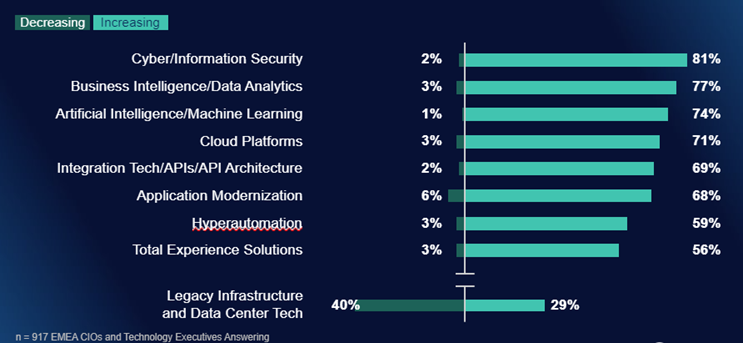
A recent Gartner survey disclosed that 46% of CIOs in Europe, the Middle East, and Africa (EMEA) are now sharing the helm of digital leadership alongside their CxO colleagues. This move is part of a broader strategy to integrate IT with business functions, creating a united front in the digital domain.
At the Gartner IT Symposium/Xpo held in Barcelona, Daniel Sanchez-Reina, VP Analyst at Gartner, remarked on the evolving dynamics of the CIO role. “The CIO’s relationship with their CxO peers is reaching a different level,” he said. Sanchez-Reina noted the effectiveness of this collaboration in “maximising digital investments” by placing “the design, management and delivery of digital capabilities with teams closest to the point where value is created are most effective at maximising digital investments.”
The symposium was the platform for presenting findings from the 2024 Gartner CIO and Technology Executive Survey, which considered the responses of 2,457 CIOs from various industries worldwide. The survey represents a vast array of global revenue and IT spending, including substantial figures from the EMEA region.
Gartner’s survey sheds further light on the increasing role of AI in digital delivery. Sanchez-Reina revealed that “CIOs have already been laying the foundation for democratised digital delivery with technologies such as low-code platforms.” He added that in EMEA, “66% of CIOs said they have deployed or plan to deploy low-code platforms in the next 24 months.” Moreover, AI is acknowledged by 72% of these CIOs as a pivotal technology for the future, particularly generative AI.
The survey identified cybersecurity, data analytics, and AI as the top investment areas for EMEA CIOs in 2024, signalling the strategic priorities in the region:

Sanchez-Reina further elucidated the advantages of the franchise model in IT management, where CIOs co-lead, co-deliver, and co-govern alongside CxO peers.
“Franchiser CIOs are breaking down the barriers of IT, allowing other business units to produce IT beyond using it. Those business units participate in the IT delivery responsibility and are accountable for the success of their own IT applications and systems they produce. Such participation in technology production goes from managing to implementing and building technology initiatives. This shows that the distinction between what is “IT” and what is “business” is becoming virtually impossible.”
Highlighting the tangible benefits of these CIO-CxO partnerships, Sanchez-Reina concluded with a strong endorsement of the co-ownership model: “The payoff of modelling CxO-CIO partnerships for digital delivery on a franchise model is substantial,” he asserted. “CxOs who embrace this franchise model are twice as likely to meet or exceed expectations from digital investments, compared with those who don’t embrace it.”


